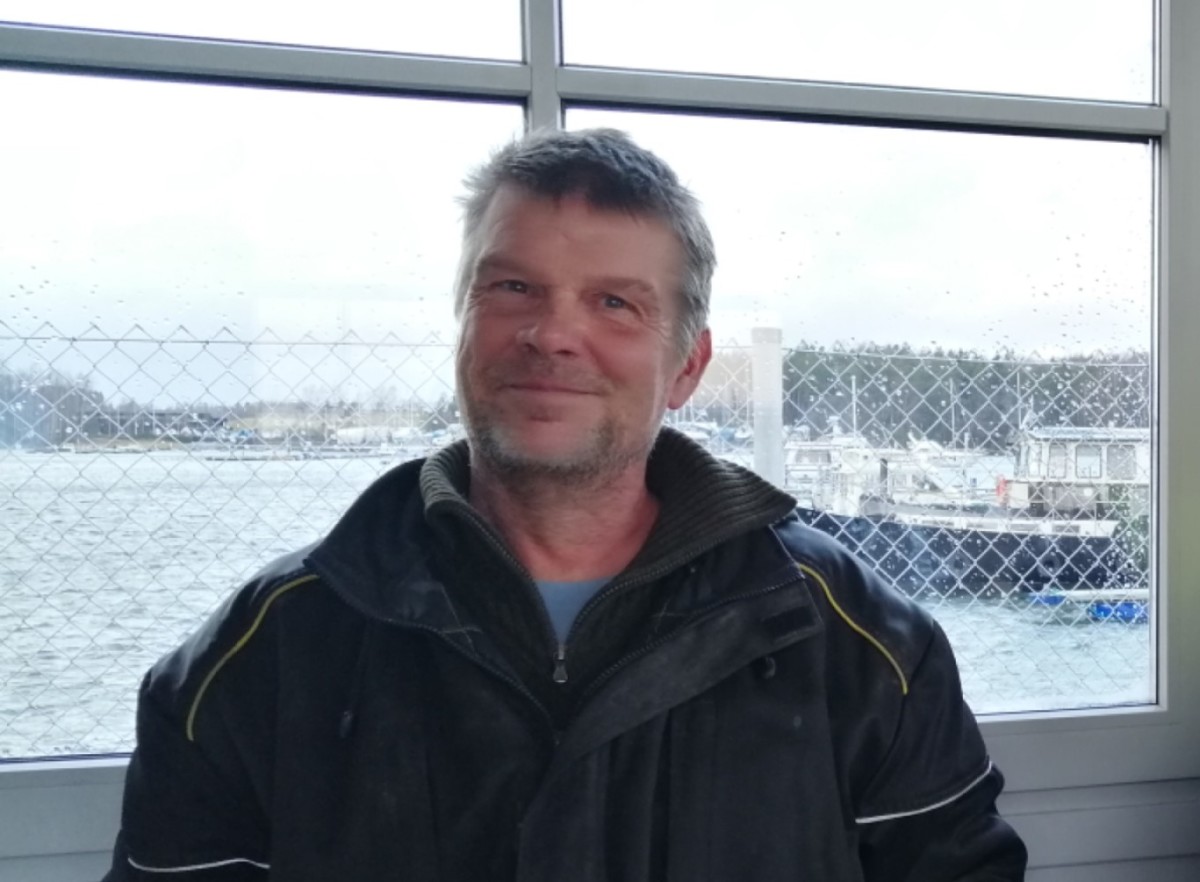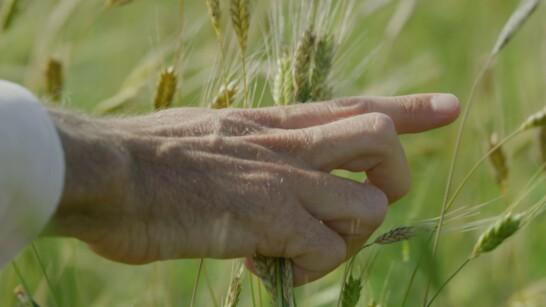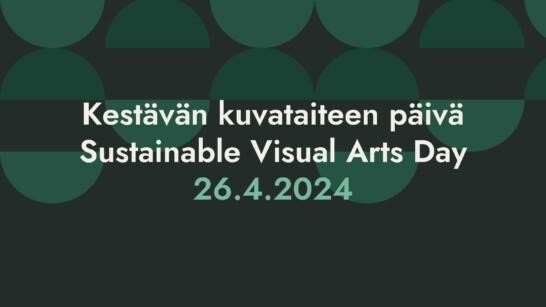News
The Baltic Sea through a fisherman’s eyes

IHME Helsinki Commission 2020 will be conceived by the sound artist Jana Winderen, whose artworks are underwater sound recordings that she makes using sophisticated hydrophones. Winderen’s new installation is planned to take place in August at the Rowing Stadium in Helsinki. As part of her research Jana Winderen, aided by IHME’s Executive Director and Curator Paula Toppila, has interviewed Baltic Sea scientists, but also people with long-term experiential knowledge of the changes taking place in the Baltic Sea.
It is hard to find a professional fisherman in Helsinki nowadays; although it is still possible in nearby municipalities. With the help of Helsinki Environment Services we made contact with the fisherman Kai Ilves, who has been fishing in Helsinki as his main livelihood since 1993. Paula Toppila interviewed Ilves in December 2019, asking questions that she and the artist had devised.
“Bleak, roach, ide, white bream, carp bream, vimba bream, European smelt, sea trout, salmon, rainbow trout, Baltic herring, pike, perch, pike-perch or zander, sichel, bristling, eel, whitefish, vendace living in the Bothnian Bay,” Kai Ilves reels off, when asked which species of fish get caught in his nets nowadays. Jana Winderen is interested in this, but she particularly wants to know about the changes that the fisherman has encountered over the last four decades.
Grey seals and the bureaucracy brought in by joining the EU
“Problems started at the beginning of the 21st century, when grey seals appeared and grew tamer and, being wise animals, started to eat easy food directly from the nets. Their favourite is salmon, then whitefish and Baltic herring. They nibble them from the net and only the heads are left. The grey seal and fish eating, you can’t say that out loud. After their arrival, you had to have a seal-proof fyke net. That is really expensive – 20,000 euros. It needs its own hardware, its own space when it’s not in use. I have developed my own model that means I get away with a bit less.”
“10,000 seals, and each one eats one salmon a day; that’s more than the whole quota. But, apparently, according to the civil servants, seals don’t eat anything. But salmon stocks are dwindling. Evidently mermaids are raiding our nets. Salmon used to be the backbone of coastal fishing. It meant you could buy traps, keep your gear in good shape. Then it broke down, so now you limp along on crutches.”
“It started after Finland joined the EU and the problem of overfishing in the Mediterranean came up. There was an EU-level decision to cut down the number of professional fishermen by 6000 across the whole EU. Finland interpreted this generously and decided to cut all of them down here, but when they got home they realised: Oops, we only have 4000 professional fishermen in Finland. Now there are only 200 fishermen left in the whole sea area,” he says.
Ilves continues: “Gradually fishing became very bureaucratic: each fisherman has to fill out three forms every day; they inform officials about how much fish you have caught, and which ones. Filling in all the required pages on the one form takes about 40 mins. You have to mail the form within 48 hours and ask the post office to stamp the envelope. If you fish for salmon, you also have to tag each one immediately it arrives on board. You also need to report to border control every day. You have to wait out in the sea for 30 mins before docking to get permission to enter the platform. For about 15 years now, the amount of fish has gone down; carp-bream numbers have increased a lot.”
“In winter I fish under the ice with a net, as there are no seals under there. In spring, too, I sometimes put a Baltic herring net into the water as well as the fyke net, but the seals often manage to eat the fish and break the net. The situation is bad, if you look at the facts. It’s not worth it. Sometimes, I think about switching to an inland lake area. There, I’d get more fish and more cash, even by investing only 500 euros, compared with my current half a million investment.”
Blue-green algae and invasive species
“There has been blue-green algae in the Baltic sea for as long as I can remember. When more blue-green algae come into the surface water, it reaches further down. The days of salmon fishing are over and the fish go deeper because the water is getting warmer. It’s hard to say whether they are doing that because of the blue-green algae or because of the temperature. The drawback is that it harms the fisherman by causing blue-green algae allergy and poisonings. The nets get dirty and they are hard to clean. Then there are the invasive species: the fishhook water flea (Hemimysis anomala) came – bad smell – and stuck to the nets. The round goby (Neogobius melanostomus) came. The comb jelly (Ctenophora) apparently came and went as I haven’t heard of it for a while. The goby came in certain places about five years ago, everywhere. This year there weren’t any.”
“The number of times you have to clean the fyke nets has gone down, i.e. the eutrophication has been reduced, or then not necessarily. Clear water can be a symptom, too, perhaps something important is missing? Hard to say whether things are getting better or worse. Pike-perch and perch used to arrive around this time. They don’t come any more. Maybe two months ago, I got pike-perch. Big carp bream are particularly susceptible to noise, the same goes for pike-perch. You don’t have to poke about much before it goes away. If you have dredging and explosions, like there has constantly been with the dredging of Vuosaari Harbour, then the pike-perch disappear.”
Dead zones and the case of Kalasatama
“A healthy seabed is always better. One researcher said that the pike-perch stocks will rise then fall, the same with perch. That happened. I.e. the species that thrive on the seabed. The fish in the in-between space do better. There have always been dead areas. The Tammisaari area is in obviously bad condition, the water can’t get to change because of the islands, the run-off water. But for sure humans are worse than minks for destroying their own environment and poaching.”
In order to maintain fishermen’s livelihood they need appropriate spaces to store, wash and repair their fishing gear; to store and pack fish for selling. In the current residential area called Kalasatama (Fish Harbour) there used to be a fishing harbour until 2008, namely the harbour area of Sörnäinen. Its main function was to serve as a harbour for imports, but there was also the fishing harbour and fish-product factory in the neighbourhood.
“The ELY Centres for Economic Development, Transport and the Environment in Finland did nothing when the fishing harbour was moved elsewhere. The city offered a plot of land in Kallvik (Kallahti), for 10,000 euros a month; fishermen don’t have that kind of money. The grassy shore makes it impossible to wash the fyke nets.”
“When there is no harbour, then they imagine the fishermen can buy their own place and operate from there. Then the freezer containers came and for that they needed a crane – a HIAB – that would take the fish to where the containers are. The end result was that, one day, the container wasn’t emptied and the Lithuanians bought their fish elsewhere. That’s how that ended, too. If, again, you only catch carp bream, its kilo price stays so low, simply because of the refrigeration alone. There are no spaces, i.e. you can’t do that. This is what you call politics: “It would be nice to have fishermen in Helsinki”, but they don’t really give you any chance.”


